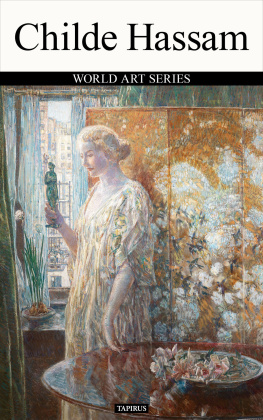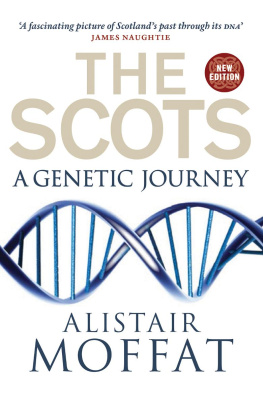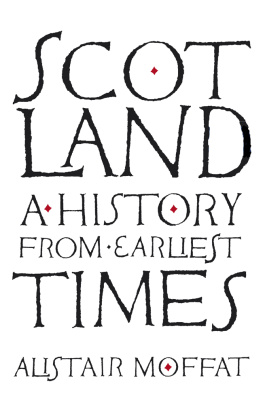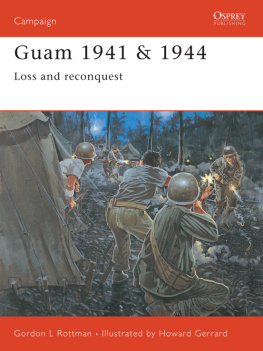ROUTLEDGE LIBRARY EDITIONS: SCOTLAND
Volume 6
SCOTLAND BEFORE THE SCOTS
First published in 1946 by Methuen
This edition first published in 2022
by Routledge
2 Park Square, Milton Park, Abingdon, Oxon OX14 4RN
and by Routledge
605 Third Avenue, New York, NY 10158
Routledge is an imprint of the Taylor & Francis Group, an informa business
1946 V. Gordon Childe
All rights reserved. No part of this book may be reprinted or reproduced or utilised in any form or by any electronic, mechanical, or other means, now known or hereafter invented, including photocopying and recording, or in any information storage or retrieval system, without permission in writing from the publishers.
Trademark notice: Product or corporate names may be trademarks or registered trademarks, and are used only for identification and explanation without intent to infringe.
British Library Cataloguing in Publication Data
A catalogue record for this book is available from the British Library
ISBN: 978-1-03-206184-9 (Set)
ISBN: 978-1-00-321338-3 (Set) (ebk)
ISBN: 978-1-03-207028-5 (Volume 6) (hbk)
ISBN: 978-1-03-207034-6 (Volume 6) (pbk)
ISBN: 978-1-00-320504-3 (Volume 6) (ebk)
DOI: 10.4324/9781003205043
Publishers Note
The publisher has gone to great lengths to ensure the quality of this reprint but points out that some imperfections in the original copies may be apparent.
Disclaimer
The publisher has made every effort to trace copyright holders and would welcome correspondence from those they have been unable to trace.
SCOTLAND BEFORE THE SCOTS
being
The Rhind Lectures for 1944
by
V. GORDON DHILDE
PROFESSOR OF PREHISTORIC ARCHAEOLOGY UNIVERSITY OF EDINBURGH

First published in 1946
THIS BOOK IS PRODUCED IN COMPLETE CONFORMITY WITH THE AUTHORIZED ECONOMY STANDARDS
PRINTED IN GREAT BRITAIN BY
JARROLD AND SONS, LTD., NORWICH
PREFACE
THIS book embodies the substance of six Rhind Lectures delivered to the Society of Antiquaries of Scotland under the title, The Development of Tribal Society in Scotland in pre-Roman Times. They were an attempt to present a slice of prehistory in a way quite novel to English readers. The prehistory of the British Isles was undoubtedly punctuated by a series of invasions. Accounts of it are liable to be so engrossed with tracing the successive invading groups to their Continental cradles and defining what contribution each introduced that they have little space left to relate what the several societies did when they got here. Our Soviet colleagues have criticized perhaps a little too harshly this idiosyncrasy of British prehistorians, but for their part have shown how the internal development of societies themselves can explain a wide range of archaeological facts. Their applications of Marxism to prehistory have produced narratives that seem more historical than a succession of invasions and are yet just as objective and solidly based on observed data. Accordingly when invited by the Society of Antiquaries to deliver the Rhind Lectures in Archaeology for 1944 on a subject relating to Scottish prehistory, I resolved to apply to it the method so successfully used by the late E. Krichevskiy, Kruglov, Podgayetskiy, Tretiakov, and other Marxists in Russian prehistory. Luckily the technical evidence has for the most part been already marshalled and digested so that its statement and analysis can be relegated to footnotes and appendices, leaving the text free for strictly historical action. The reader must judge whether the drama discharged be lively and convincing.
For the author it remains to acknowledge his indebtedness on the one hand to his Russian colleagues whose mastery both of archaeology and Marxism has been his inspiration and on the other to the Society of Antiquaries of Scotland not only for electing him Rhind Lecturer, but also for permitting him to illustrate this printed version of the course with reproductions of figures originally published in their Proceedings and other publications. is reproduced by permission of the Ministry of Works. My colleague, Mr. James Drummond, and Mr. Stuart Cruden have been kind enough to read the proofs.
EDINBURGH, November 1945
CONTENTS
CHAPTER
I. CLASSIFICATION OF THE DATA
The Sequence of Cultures; Stages; the Culture-sequence in Orkney and Shetland; Absolute Chronology; Geographical Classification;
II. STONE AGE SOCIETIES
Mesolithic Hunters; Skara Brae; Megalith-builders
III. THE EARLY BRONZE AGE
IV. THE HEROIC AGE
V. THE LATE BRONZE AGE
VI. THE CELTIC IRON AGE
I. THE TYPOLOGY OF CHAMBERED CAIRNS AND THEIR CONTENTS
List of Chambered Cairns
II. TYPOLOGY OF BEAKERS
Supplementary List of Beakers
III. RECUMBENT STONE CIRCLES
IV. CLASSIFICATION OF FOOD VESSELS
List of Food Vessels
V. EXTENDED BURIALS AND CHIEFTAINS GRAVES OF STAGE IV
VI. LIST OF DAGGER GRAVES
VII. TYPOLOGY OF BRONZES
VIII. CINERARY URNS AND THEIR CONTENTS
IX. ABSOLUTE CHRONOLOGY
X. BRONZE AGE GRAVES IN ORKNEY AND SHETLAND
XI. LIST OF GALLIC AND VITRIFIED FORTS
XII. LIST OF ABBREVIATIONS
INDEX
- I. Classification of the Data
- The Sequence of Cultures
- Stages
- the Culture-sequence in Orkney and Shetland
- Absolute Chronology
- Geographical Classification
- II. Stone Age Societies
- Mesolithic Hunters
- Skara Brae
- Megalith-builders
- III. The Early Bronze Age
- IV. The Heroic Age
- V. The Late Bronze Age
- VI. The Celtic Iron Age
- Appendices
- I. The Typology of Chambered Cairns and their Contents
- List of Chambered Cairns
- II. Typology of Beakers
- Supplementary List of Beakers
- III. Recumbent Stone Circles
- IV. Classification of Food Vessels
- List of Food Vessels
- V. Extended Burials and Chieftains Graves of Stage IV
- VI. List of Dagger Graves
- VII. Typology of Bronzes
- VIII. Cinerary Urns and their Contents
- IX. Absolute Chronology
- X. Bronze Age Graves in Orkney and Shetland
- XI. List of Gallic and Vitrified Forts
- XII. List of Abbreviations
- Index
Guide
- Start of Content
- Appendices
- Index
CHAPTER I
CLASSIFICATION OF THE DATA
FOR reconstructing the life of forgotten, illiterate societies, archaeology offers the prehistorian an undigested mass of broken articles and ruined buildingsrelics and monuments. Of this mass, bequeathed to us by the savage or barbarous past, part unfortunately still resists classification; no one knows, for instance, what the standing stones on the naked wine-dark moor were for, nor yet when they were set up. Here all objects of this sort, objects of speculation but not yet of knowledge, albeit regrettably numerous, will be simply ignored. All the rest are scientifically significant, but their value varies.











